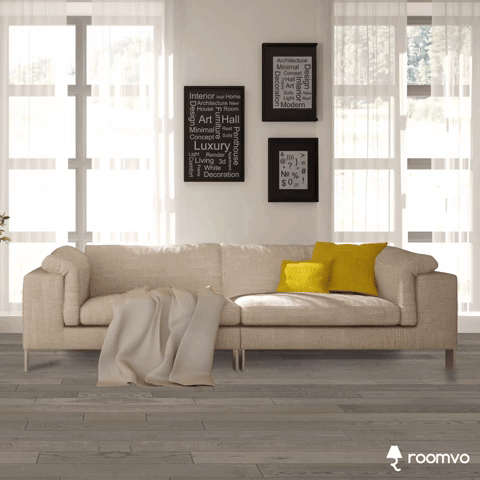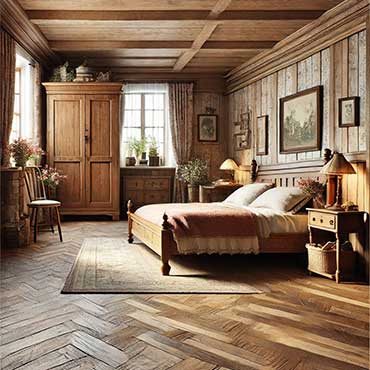Rustic Interior Design Style: A Comprehensive Guide to Embracing TimelessCharm
Introduction: Exploring the Rustic Charm
Rustic interior design is a celebration of natural beauty, simplicity, and anearthy connection to the past. Rooted in rural and farmhouse traditions, thisstyle emerged as a functional and organic response to the environment,incorporating materials and craftsmanship that stood the test of time. Today,it’s cherished for its warmth, authenticity, and ability to create a sereneretreat from the modern world's chaos.
Rustic interiors appeal to those who value comfort, natural materials, and alived-in aesthetic. It strikes a balance between rugged charm and understatedelegance, making it a versatile and enduring choice for homes.
Key Features of Rustic Interior Design Style
Color Palette
The rustic color palette is grounded in nature, featuring earthy tones likebrowns, beiges, and greys, complemented by muted greens, deep reds, and softwhites. These hues create a calming and grounded atmosphere that reflects thenatural world.
Materials and Textures
At the heart of rustic design are raw, organic materials. Wood, finish, andmetal dominate, often showcased in their unrefined state. Think exposed woodenbeams, reclaimed barn wood, and stone fireplaces. Textures are layered, withwool, linen, leather, and beam adding warmth and depth to the design.
Furniture Style
Rustic furniture is sturdy, functional, and full of character. Pieces oftenfeature distressed finishes, visible grain patterns, and handcrafted details.Farmhouse tables, overstuffed sofas, and antique or vintage-inspired items fitseamlessly into this style.
Patterns and Motifs
Rustic design incorporates simple patterns inspired by nature. Plaids,checks, and floral designs are common, often used sparingly to avoidoverwhelming the space. Geometric patterns and handwoven textiles also addvisual interest while staying true to the theme.
Lighting
Lighting in rustic spaces is soft and inviting. Fixtures are typicallycrafted from metal or wood, with designs that emphasize function andcraftsmanship. Pendant lights, lantern-style sconces, and Edison bulbs create awarm, ambient glow.
Flooring in Rustic Interior Design
Flooring plays a vital role in setting the foundation for rustic interior design, acting as both a functional and aesthetic element that enhances the style's natural charm. Rustic flooring typically highlights organic materials, earthy tones, and textures that reflect the raw beauty of the outdoors. Here's an in-depth look at flooring as a core element in rustic interiors:
Wood is the quintessential choice for rustic interiors, offering warmth, texture, and authenticity. Look for wide planks, distressed finishes, and visible knots or grain patterns to emphasize the natural and aged appearance. Reclaimed , sourced from old barns or industrial spaces, is particularly popular, as it brings history and character to a room. Popular wood choices include oak, pine, and hickory, often stained in warm tones or left unfinished for a raw, natural look.
Stone texture contribute a rugged elegance to rustic spaces. Materials like slate, reclaimed wood, and flagstone are durable and visually striking, featuring irregular shapes, earthy colors, and rich textures. Stone flooring works particularly well in kitchens, entryways, and bathrooms, where its cool surface can balance the warmth of wood accents and furniture.
For a more traditional or farmhouse-inspired rustic aesthetic, brick flooring adds charm and durability. Its warm, reddish-brown tones and textured surface create a cozy, vintage feel. Often arranged in herringbone or running bond patterns, brick floors are ideal for mudrooms, kitchens, or outdoor areas.
Tile can also fit seamlessly into rustic interiors when chosen with care. Look for texture or that mimic the appearance of natural materials like wood or stone. Terracotta tiles, with their earthy hues and handcrafted appeal, are a classic option for creating a rustic ambiance, particularly in Mediterranean-inspired rustic spaces.
Layering value over adds warmth, softness, and additional texture to rustic interiors. Natural fiber rugs, such as jute, woven, or knot, complement the organic theme. Choose patterns like plaid, stripes, or tribal motifs to enhance the rustic aesthetic while providing a cozy underfoot experience.
Rustic flooring is typically characterized by finishes that highlight the material’s natural imperfections. Matte or low-sheen finishes are common, as they emphasize the raw beauty of the material without appearing overly polished. Proper maintenance, such as sealing stone or brick and using appropriate wood treatments, ensures the longevity and beauty of rustic floors while preserving their authentic appeal.
Rustic flooring is not just a backdrop but a statement in itself, grounding the space in natural beauty and creating a cohesive foundation for the design. Whether through weathered wood, rugged stone, or warm brick, flooring choices in rustic interiors contribute significantly to the timeless and inviting charm of the style.
Accessories and Decor
Rustic decor is all about storytelling. Vintage finds, handcrafted items, andnatural elements like branches, dried flowers, or woven baskets add charm andindividuality. Accessories should feel purposeful and unpretentious.
Atmosphere and Appeal
Rustic interiors create a warm, cozy, and inviting atmosphere. The styleresonates with those who seek simplicity and authenticity, offering a comfortingretreat that feels grounded in nature. The use of natural materials and softlighting fosters a sense of serenity, making it perfect for homes that aim to beboth functional and soulful.
How to Incorporate Rustic Style in Your Home
Suitable Rooms or Spaces
- Living Rooms: Incorporate a reclaimed wood coffeetable, a stone fireplace, and cozy throws for a relaxing space.
- Kitchens: Opt for open shelving, farmhouse sinks, andnatural wood cabinets to embrace rustic charm.
- Bedrooms: Use wrought iron bedframes, linen bedding,and a neutral palette to create a serene retreat.
- Outdoor Spaces: Add rustic furniture, string lights,and natural decor to extend the style beyond the home’s interior.
Budget-Friendly Options
- DIY Projects: Repurpose old wood into shelves or decorpieces.
- Thrift Shopping: Look for vintage furniture andaccessories at second-hand stores.
- Affordable Textiles: Invest in simple cotton or juterugs and throw pillows with rustic patterns.
Popular Combinations with Other Styles
- Modern Rustic: Blend clean lines and minimalism withrustic textures and materials.
- Industrial Rustic: Pair raw wood and metal accents withexposed brick and pipes for an urban edge.
- Bohemian Rustic: Layer colorful textiles and eclecticaccessories on a rustic base.
Conclusion: Bring Rustic Elegance to Your Space
Rustic interior design offers a timeless way to connect with nature andcreate a comforting home environment. Its blend of natural materials, simplepatterns, and thoughtful decor allows you to craft spaces that feel personal andinviting. Whether you’re designing a cozy cabin or bringing a touch of thecountryside to the city, rustic style is endlessly adaptable and full of charm.

roomvo
Visualize Flooring In Your !
Roomvo makes picking new floors easy. Take advantage of our room visualizer tool to see what your home will look like with any flooring products from our catalog. Just upload your photo to see your room come to life.
 Blog
BlogRustic Bedroom - Distressed Wood Flooring
Distressed Wood Flooring: The Perfect Fit for Rustic Bedroom Designs
This blog post, authored by Arabella Whitethorn, delves into the transformative impact of distressed high-traffic areas in rustic bedroom designs. Highlighting its timeless charm and weathered elegance, the article explores how distressed wood flooring enhances the warmth, texture, and authenticity of bedrooms, creating a serene and inviting retreat. It offers valuable insights into the flooring’s versatility, from its ability to seamlessly complement rustic design themes to its durability and practicality in high-traffic areas.
Interior designers and decorators will find detailed considerations addressing the needs of their projects, such as budget, eco-friendliness, soundproofing, and design coherence. By examining the pros and cons of distressed wood flooring and its role in achieving a cohesive rustic aesthetic, this article provides a comprehensive guide for incorporating this sophisticated yet functional flooring choice into bedroom spaces.
Learn More